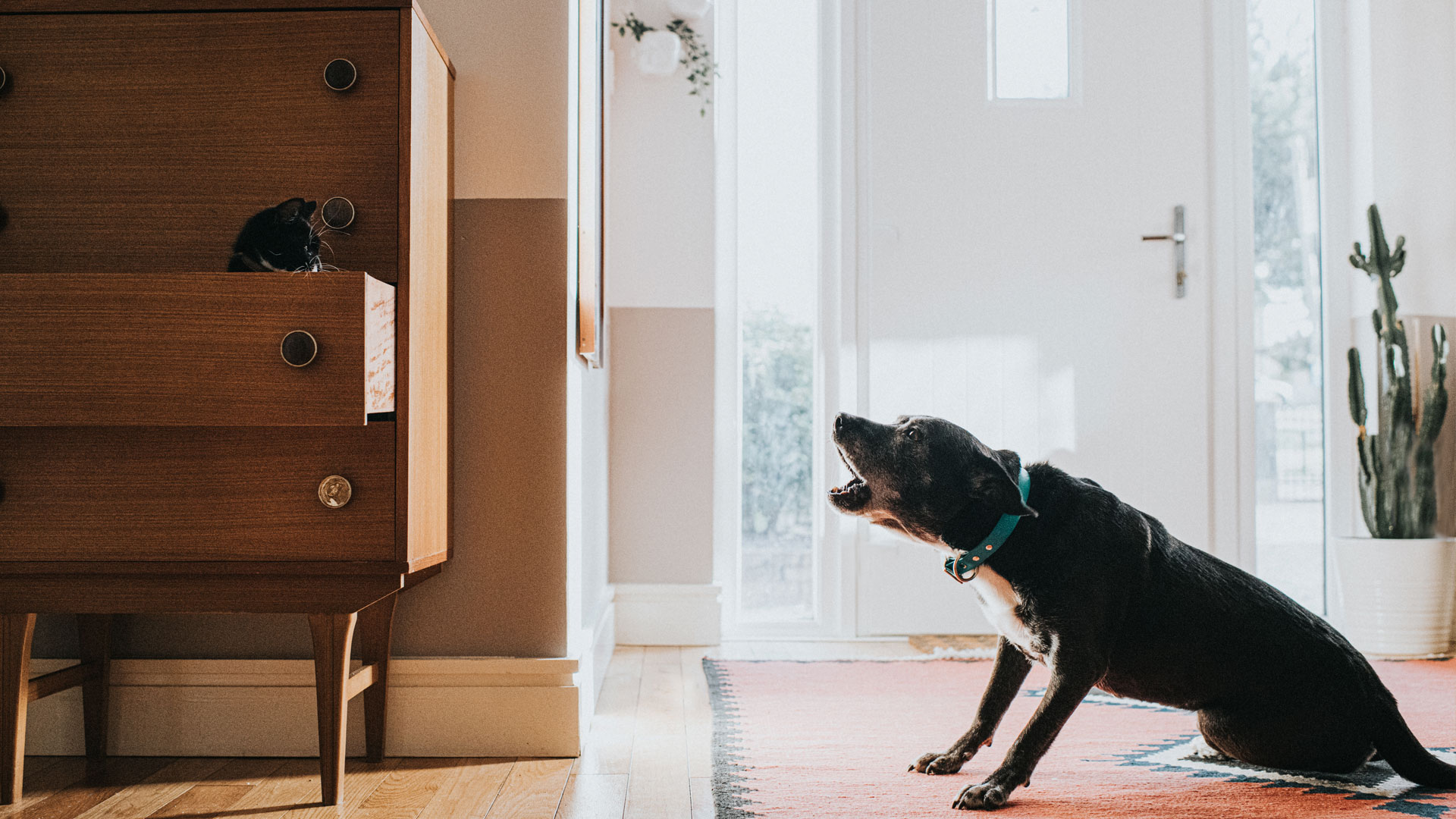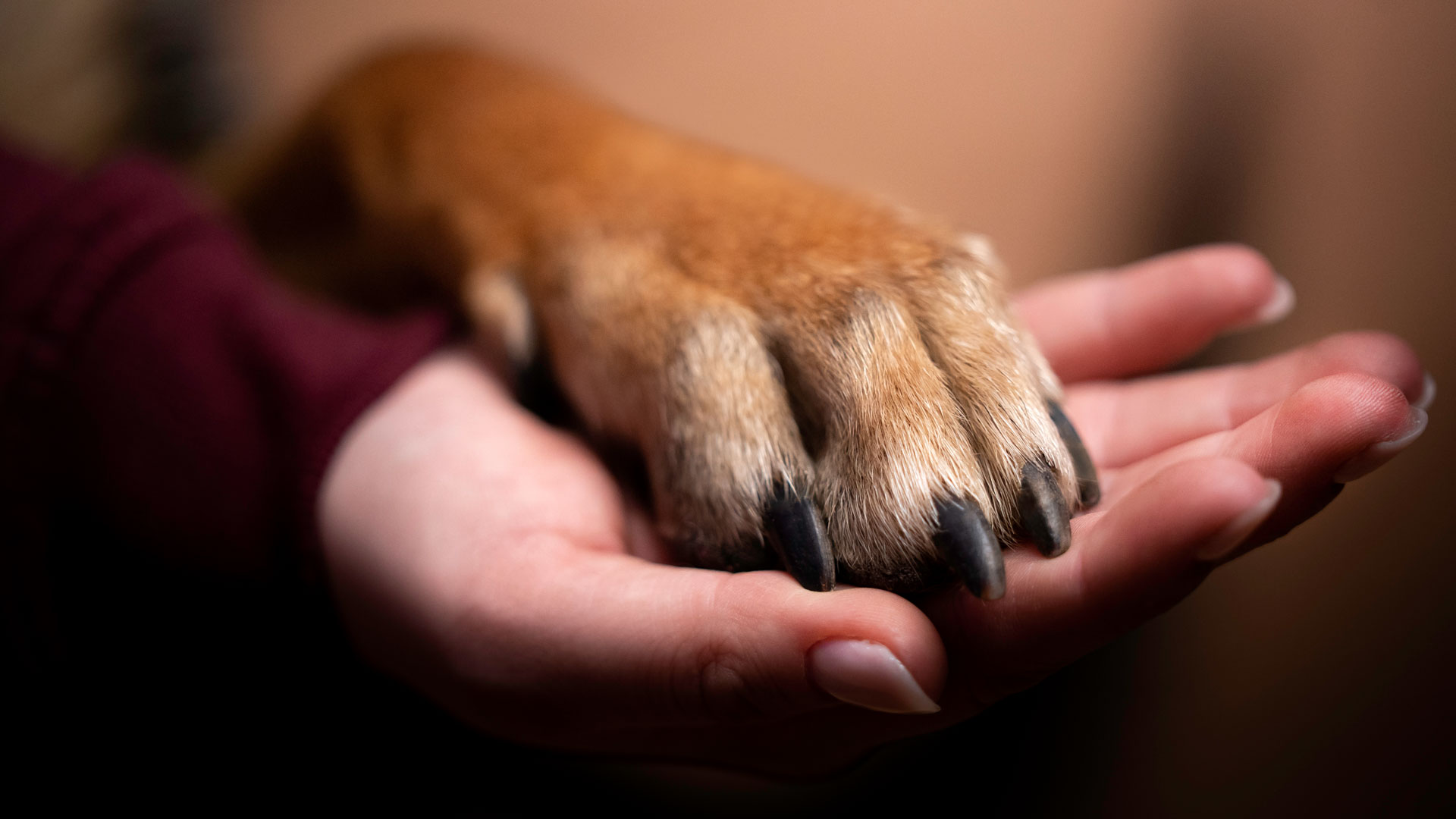
We all picture the calm, loving, well-behaved furry companion, but it's a whole new ball game when a reactive dog enters your home.
My story is about how I helped my reactive rescue dog, Poppy, a large Weimaraner cross, become a calmer dog in and out of the house. My experience will help you learn how to calm a reactive dog in your household.
We bought a seven-month-old Poppy home on a warm summer day in June 2010. I fell hopelessly in love with her the minute we met, although she was standoffish with me, my fiancé and our two dogs. She'd belonged to a lady with multiple sclerosis, so we assumed she'd had little socialization. The foster carer told us that Poppy "occasionally barked at people," but, oh boy, that was the biggest understatement ever.
At first, we didn't notice a problem. We lived in a tiny village, and I walked the dogs around the landlord's farm, so we didn't get to meet many people. I cannot recall Poppy's first explosive reaction to people and dogs, but her response was shocking.
Poppy's trigger distance was around three hundred yards, at which point she would lunge and bark like crazy. At 88 lbs/40kg, handling Poppy was challenging, as I discovered when she pulled me over the first time as we walked across a car park.
I didn't see the children sitting atop their Land Rover, but Poppy did! I hit the concrete face down, and apparently, the sound I made was like a wounded animal. I'd cracked several ribs and couldn't breathe without pain for weeks.
My first strategy was to get a gentle head collar so I had more control. That helped a lot, but I still had no idea how to channel her behavior. When family or friends visited, Poppy's behavior was a nightmare. She would not stop her loud barking until people left. Visitors were worried she was aggressive and became reluctant to bring their young children.
Poppy was an affectionate dog. Once she relaxed with people, she'd treat them to a gorgeous cuddle, but sadly, few people believed that. Subsequently, I began dreading visitors arriving.
My second faceplant was so bad it caused me to admit defeat and start training as a dog behaviorist. The situation was so bad, and I couldn't afford to keep taking six weeks off work to recover physically.
Finally, once I qualified, I began understanding Poppy's reactivity and took steps to manage and shape her behavior and help visitors have some control over their interactions with her. Here's what you can do.
Stay calm
I'm embarrassed to admit that before I qualified as a dog behaviorist, I often shouted at Poppy when she barked and lunged at people and dogs. I felt ashamed that people would think I had no control over my dog. Truthfully, I didn't!
I would feel angry with Poppy and frustrated by my inability to train my dog to be calm.
I remember the moment when I first reacted differently to a Poppy outburst. It was a happy day. I calmly redirected Poppy to move further from the trigger before her reactivity escalated. The way she looked up at me melted my heart. If a dog could express gratitude on their face, I witnessed it that day.
I quickly stopped caring what people thought about me or Poppy. I now knew what I was doing, and my sole job was ensuring Poppy felt safe. I'd identified that her behavior was fear reactivity, as it is for many reactive dogs. She needed me to be the benevolent leader, and that meant I stayed calm whatever was happening.
I often tell clients it was a defining moment when Poppy knew I "had her back."
As an aside, learning to remain calm regardless of the situation helped me better deal with the ups and downs of life and become a more relaxed and balanced person. That's one beautiful thing a reactive dog can give you if you take the time to be the anchor your dog needs.

Give your visitors guidelines
Often, visiting family and friends would try to initiate contact by talking to Poppy, sadly failing above the noise of her barking. After my training, I had new guidelines.
Before visitors entered the garden, I told them not to make eye contact, touch, or speak to her. In short, ignore Poppy until she becomes quiet. I gave them a handful of treats and advised only to reward Poppy when she was calm and stopped barking.
As Poppy got more intimidated inside the confines of the house, I instructed visitors to meet and greet her in the garden if the weather permitted. That way, they could play with her by throwing her (many) toys. This activity worked a treat and massively shortened the reactive response.
After playing in the garden, Poppy would bring her toys into the house and throw them in visitors' laps to encourage more play. It was lovely for them to see the playful, goofy and loving dog I knew.

Teach your dog an alternative behavior
You cannot teach a dog what not to do, but you can stack new behaviors by introducing an alternative behavior. For Poppy, the most potent "energy shifter" was teaching her to sit when troubled. Therefore, I told visitors to say, "Poppy, sit" when she barked at them. When she sat, they then said, "Poppy, down."
This exercise worked well because sitting and going down are calming protocols, especially the down. You'll understand that when your dog reacts, he's usually standing tall with hackles raised, lunging and barking. Breaking that heightened emotional state is a powerful antidote to reactivity.
Teaching alternative behaviors made the single biggest difference to our lives and to the experience our visitors had with Pops.
These three exercises may seem simple, but the effects can be significant. You may not notice changes immediately, but if you remain consistent, I'm confident you can improve your dog's behavior and experience a more harmonious household.
By following the guidelines, encourage the family and visitors to help you retrain your reactive dog. I found it helpful to make it seem like a game and tell them what to expect if they follow my instructions.
Not sure if your dog is reactive or aggressive? Here's how to tackle dog aggression and find out the difference between that and reactivity.







